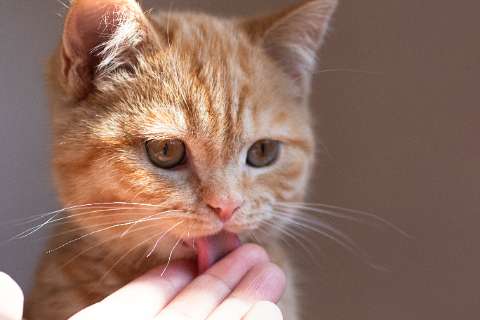Understanding Your Feline Puzzle: Why Does My Cat Bite Me?
Cats are mysterious creatures, often both independent and affectionate, with behaviors that range from the endearing to the frustrating. One common concern among cat owners is the unexpected nip or bite they receive from their furry friend. Adult cats and kittens alike can exhibit this behavior, leaving their human companions puzzled and occasionally in pain. If you've ever wondered, "Why does my cat bite me?" you are certainly not alone.
In this comprehensive exploration, we'll uncover the various reasons behind this surprisingly complex behavior and offer insights into how you can understand and potentially mitigate it. Understanding the motives behind your cat's bites can not only strengthen your bond with your pet but also enrich your overall experience as a cat owner.

The Language of Cat Bites
Before we can address the 'why,' we must first decode the message behind your cat's bite. Unlike dogs, who generally use bites as a primary form of communication, cat bites are more nuanced. Cats have a variety of vocalizations, body postures, and bite types, all of which convey distinct meanings.
Play Biting
Kittens explore the world with their mouths, a behavior that extends into playtime. If you're being nipped without aggression, it's likely your cat is treating you as they would a littermate or prey. Play biting is gentler and often accompanied by wide eyes, a relaxed body, and a flicking tail—classic signs of a feline looking to engage in a friendly manner.
Affectionate Biting
In some cases, a cat's bite is a sign of affection, paradoxical as it may seem. This behavior, sometimes dubbed 'love biting,' typically involves soft nibbles usually paired with other forms of endearment such as purring, head butting, and kneading. It's their way of expressing fondness.
Defensive Biting
If your cat feels threatened or is startled, they might resort to biting as a defensive measure. This type of bite is usually more serious, with the cat's ears flattened, body tense, and accompanied by other signs of fear or anger, like hissing or growling.
Medical Issues
Pain or discomfort from an underlying health condition can also lead to seemingly unprovoked biting. Cats may bite when they are injured or in pain, particularly if the affected area is touched, causing them distress. If biting is a new behavior for your cat, a visit to the vet is crucial to rule out any medical concerns.
To Train or Not to Train
Training a cat not to bite can be a delicate task. Since bites serve various purposes, the approach to curtailing this behavior must be tailored to the cat and the context of the bite.
Positive Reinforcement
When it comes to play or affectionate biting, redirection is key. Whenever your cat bites, redirect their attention to a toy or treat to teach them that biting humans is not appropriate, but there are other ways to satisfy their instincts.
No Punishment
Aggressive biting should never be met with punishment, as it could exacerbate the behavior and harm your relationship with your pet. Instead, focus on understanding the causes of their aggressive impulses and take steps to provide a calmer, more secure environment.
Behavioral Triggers
Observing your cat's behavior can provide insights into when and why they bite. Note the circumstances surrounding the bites. Is there a particular activity or time of day when biting is more likely to occur? Identifying patterns can help you address specific triggers that cause your cat to bite.
In the Pursuit of Peaceful Coexistence
Understanding your cat's triggers and motives for biting is essential. A well-socialized cat that has been taught appropriate play and boundaries from a young age is less likely to resort to biting as an adult. Regular interactive play, socialization, and providing a stimulating environment can alleviate the underlying reasons for biting. Additionally, spaying or neutering your cat can reduce aggressive tendencies prompted by hormonal changes.
In the enigmatic world of cats, biting holds many meanings. Whether it's a call for play, a show of affection, a sign of discomfort, or a defensive maneuver, each type of bite reveals a facet of your pet's experience and feelings. Patience, observation, and a gentle approach to training can transform the frustrating bite into a rare occurrence, allowing mutual trust, respect, and love to be the hallmarks of your relationship.
By learning to speak the language of cat bites, you not only make your home a safer and more harmonious place for your feline friend but also deepen the bond you share, making those rare face rubs and head boops all the more precious.


Leave a comment